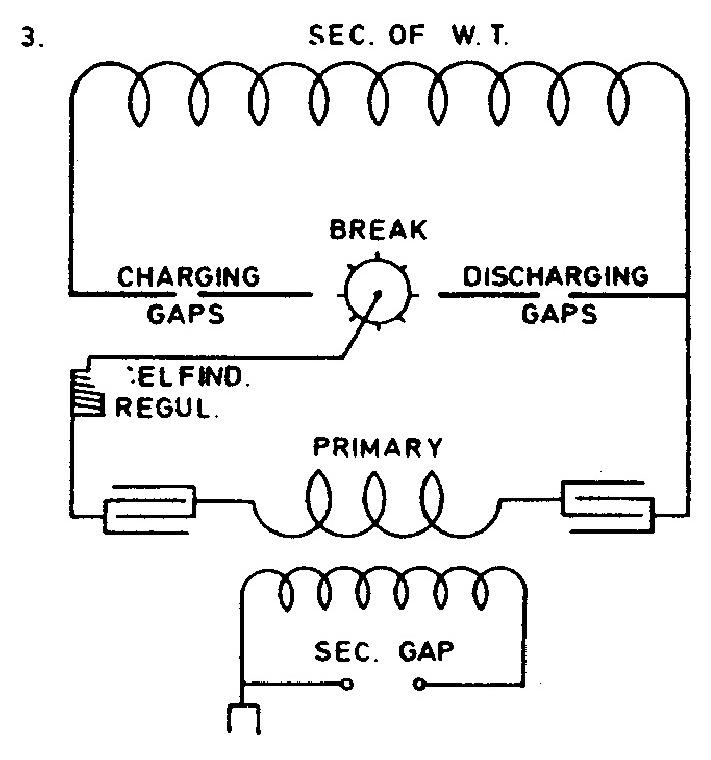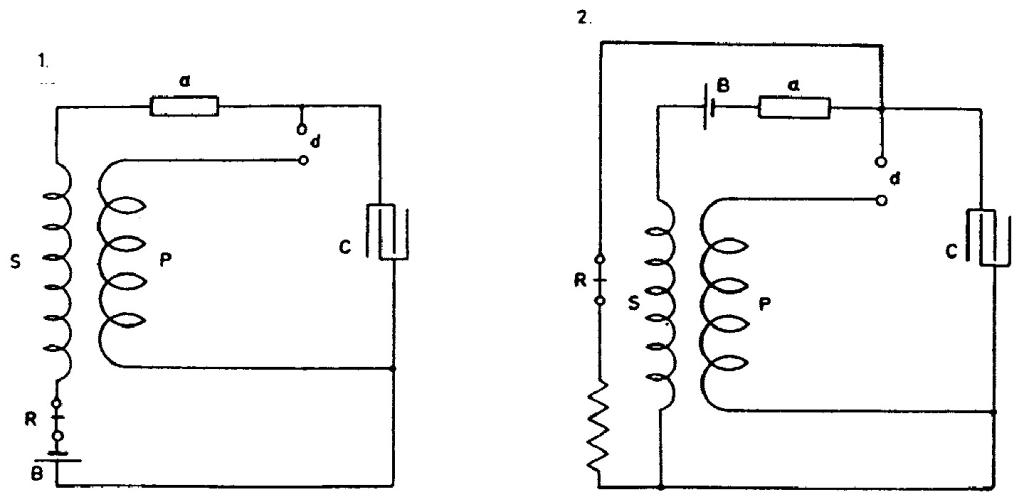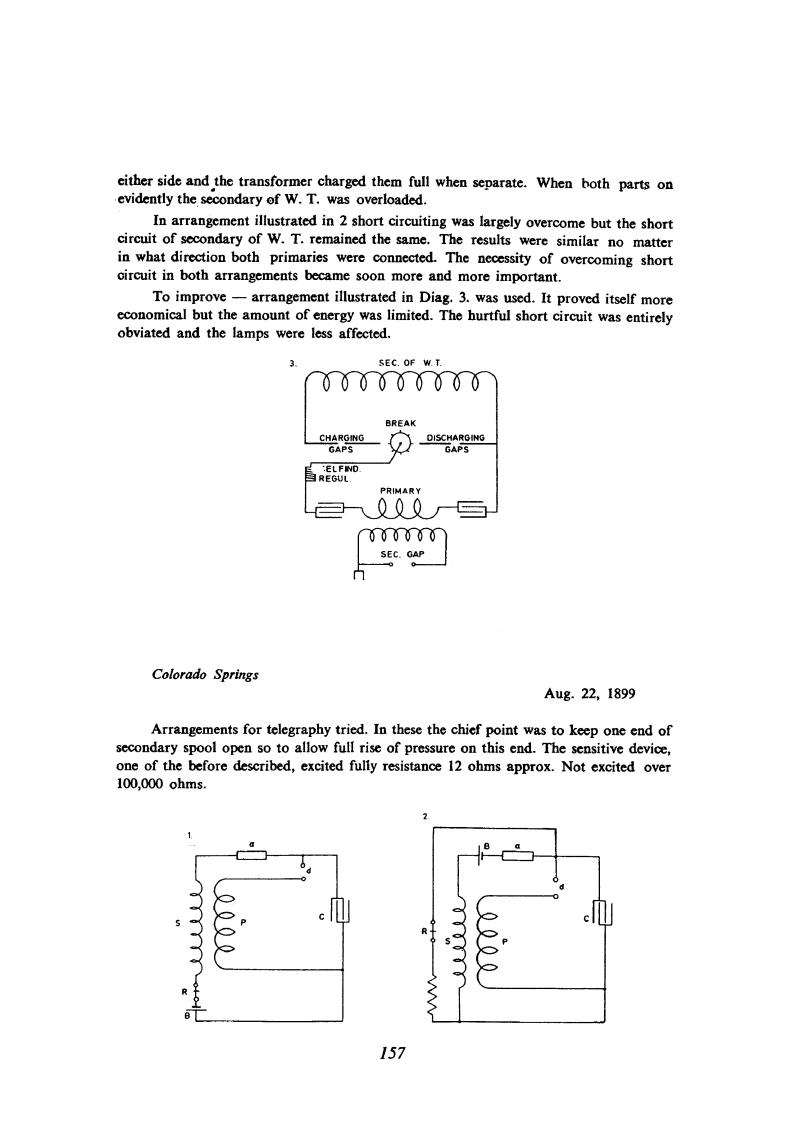
Nikola Tesla Books
either side and the transformer charged them full when separate. When both parts on evidently the secondary of W. T. was overloaded.
In arrangement illustrated in 2 short circuiting was largely overcome but the short circuit of secondary of W. T. remained the same. The results were similar no matter in what direction both primaries were connected. The necessity of overcoming short circuit in both arrangements became soon more and more important.
To improve - arrangement illustrated in Diag. 3. was used. It proved itself more economical but the amount of energy was limited. The hurtful short circuit was entirely obviated and the lamps were less affected.
Colorado Springs
Aug. 22, 1899
Arrangements for telegraphy tried. In these the chief point was to keep one end of secondary spool open so to allow full rise of pressure on this end. The sensitive device, one of the before described, excited fully resistance 12 ohms approx. Not excited over 100,000 ohms.
157
August 22
In this entry he returns once again to the receivers. He tried out two receiver circuits using one battery and one sensitive device. He changed the capacity in the primary circuit over a wide range, but it is not clear why 1 µF proved best. It remains unexplained what was the relationship between the frequency of the incoming signal and that generated by the receiver itself. Could it perhaps be, if the rotating coherer behaved as a nonlinear element, that the signal was amplified as in a heterodyne receiver(55)?



